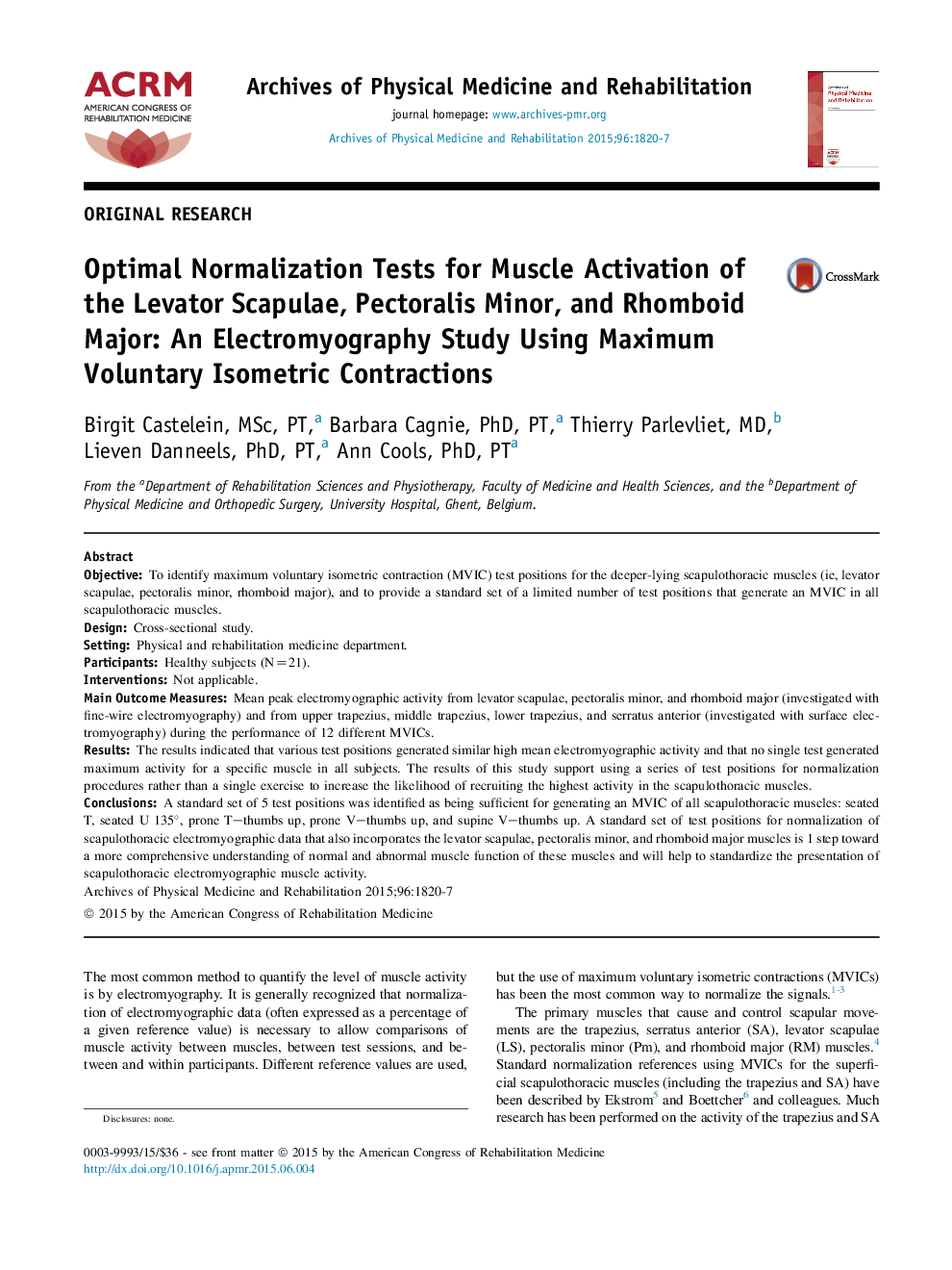| کد مقاله | کد نشریه | سال انتشار | مقاله انگلیسی | نسخه تمام متن |
|---|---|---|---|---|
| 3448430 | 1595676 | 2015 | 8 صفحه PDF | دانلود رایگان |

ObjectiveTo identify maximum voluntary isometric contraction (MVIC) test positions for the deeper-lying scapulothoracic muscles (ie, levator scapulae, pectoralis minor, rhomboid major), and to provide a standard set of a limited number of test positions that generate an MVIC in all scapulothoracic muscles.DesignCross-sectional study.SettingPhysical and rehabilitation medicine department.ParticipantsHealthy subjects (N=21).InterventionsNot applicable.Main Outcome MeasuresMean peak electromyographic activity from levator scapulae, pectoralis minor, and rhomboid major (investigated with fine-wire electromyography) and from upper trapezius, middle trapezius, lower trapezius, and serratus anterior (investigated with surface electromyography) during the performance of 12 different MVICs.ResultsThe results indicated that various test positions generated similar high mean electromyographic activity and that no single test generated maximum activity for a specific muscle in all subjects. The results of this study support using a series of test positions for normalization procedures rather than a single exercise to increase the likelihood of recruiting the highest activity in the scapulothoracic muscles.ConclusionsA standard set of 5 test positions was identified as being sufficient for generating an MVIC of all scapulothoracic muscles: seated T, seated U 135°, prone T–thumbs up, prone V–thumbs up, and supine V–thumbs up. A standard set of test positions for normalization of scapulothoracic electromyographic data that also incorporates the levator scapulae, pectoralis minor, and rhomboid major muscles is 1 step toward a more comprehensive understanding of normal and abnormal muscle function of these muscles and will help to standardize the presentation of scapulothoracic electromyographic muscle activity.
Journal: Archives of Physical Medicine and Rehabilitation - Volume 96, Issue 10, October 2015, Pages 1820–1827